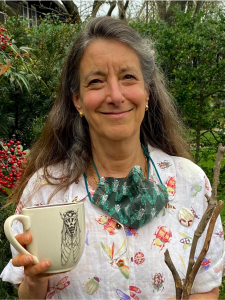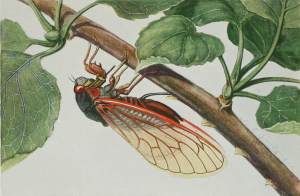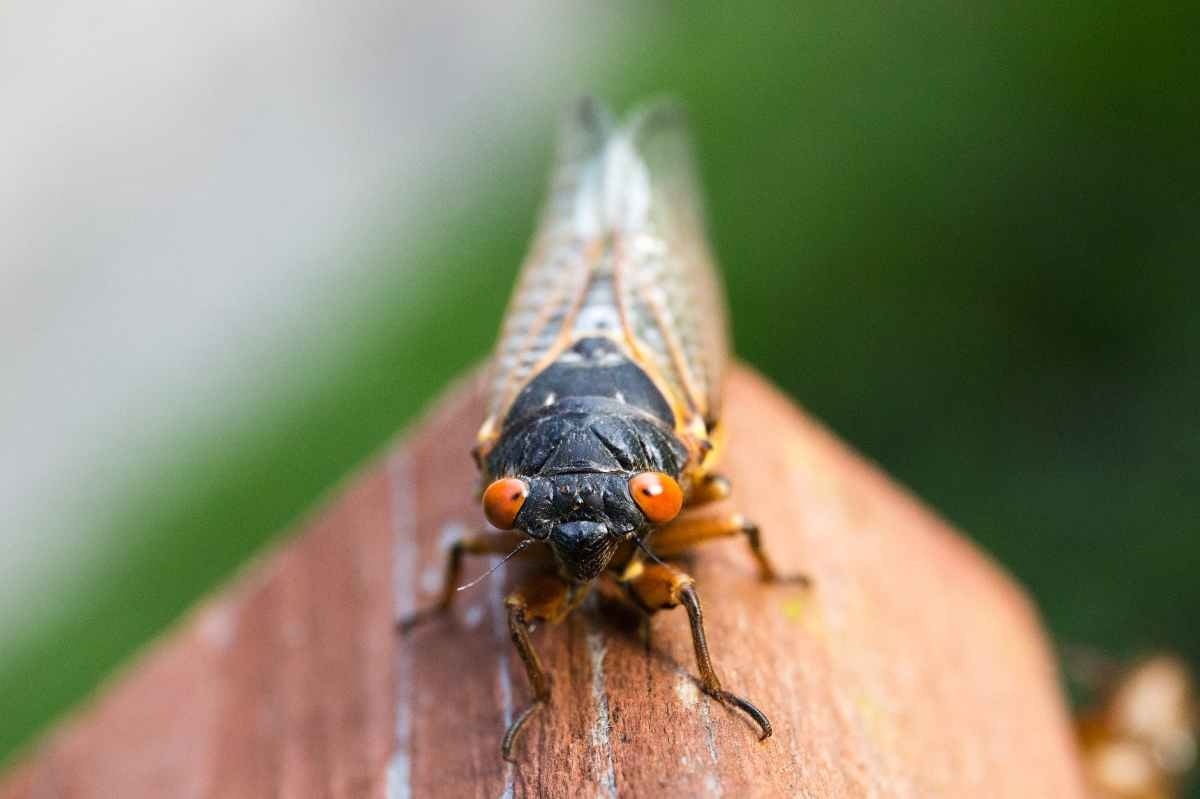Creating Cicada Curiosity: Biology Professor Launches Children’s Resource on Upcoming 17-Year Emergence
In May of this year, the United States’ east coast will experience a recurring phenomenon that takes place nowhere else in the world: the emergence of the 17 year cicada. Martha Weiss, a professor in the Department of Biology, and co-director of the Environmental Studies Program, has partnered with George Washington University biology professor John Lill, as well as environmental educator Diane Lill and post-doctoral associate Zoe Getman-Pickering, to create a comprehensive guide to cicadas for elementary and middle school students in the hopes of garnering appreciation for these complex critters.
What inspired you to create this?

Martha Weiss, biology professor and co-director of environmental studies
I came to the east coast in 1997 from California, so I had never experienced cicadas before. The last time they emerged in 2004, I had a six-year-old and a four-year-old, and it was so exciting for me and my kids to witness this unbelievable biological occurrence. However, not every child in the neighborhood was thrilled about it – in fact some were quite scared. They were just so full of questions, like “Where did they come from? Why are there so many? What do they eat? Can they hurt me? Why are they so loud?”
I didn’t know much about cicadas, but as I did my research, I saw that it just took a little knowledge and context for cicadas to go from freaky, annoying invaders to cool creatures, and I felt that I owed it to the next generation of children to spread the word.
Why is it important to educate others, especially children, about the beauty of cicadas?
This emergence only happens every 17 years, so any kid less than 20 years old has never experienced this phenomenon in their memory – and in fact, if you are less than 17 years old, these little guys are older than you are! The magnitude of this emergence is enormous, as billions of cicadas will come out across 15 states in the eastern part of the US. Currently, insects have a bad rap. For example, lots of people have the idea that bees are always going to sting you, and that prejudice is not entirely counterbalanced by our society’s appreciation for butterflies and other pretty floating insects.
The 2021 cicada emergence seemed like an opportunity to help explain to an entire generation of young people that bugs are exciting, interesting and a vibrant part of our ecosystem that we should appreciate instead of fear. We hope that by creating this resource, we will help tip the scale and influence people to be more bug-friendly. We want to roll out the insect welcome mat!
Why is it important for people to like bugs or at least have a deeper understanding of bugs? What do bugs and cicadas in general offer to our world?

Female cicada laying eggs; image by Snodgrass (1930) (public domain)
Insects are the most common and widespread animal group on earth. While there are a few species that are dangerous and can spread diseases, the vast majority are not harmful to people, and in fact are essential to us. They are pollinators, they move plant material around and help with decomposition and they are lunch for a huge diversity of other animals. Without insects, entire food chains would collapse.
When you take the time to examine them, you also realize that they are incredibly beautiful and intricate. So while cicadas in and of themselves are not necessarily critical to our existence, they are a super cool example of an extreme, bizarre and fascinating life cycle and are part of a larger group that is essential to our life as we know it.
What materials are available on the website?
Our materials target elementary and middle school students across a variety of different subjects including biology, art, writing, math and history. In the free online resource packet, we wanted to provide a curriculum that was accessible to pandemic-weary and possibly insect-wary teachers and students. We have included ready-to-use materials such as a recorded presentation by me and John, a digital and downloadable workbook in English and Spanish and a haiku contest that goes along with National Poetry Month in April. Our materials also include observations of three 18th-century Brood X emergences by Benjamin Banneker, a local scientist who made some really important observations about cicadas.
Now is a great time to start teaching kids about cicadas because you can already see signs of their upcoming appearance. If you walk around your neighborhood, you will see little holes in the soil, about the size of a dime, under trees; these emergence holes are made by cicadas that are getting ready to crawl up and out of the soil after their 17-year stint underground. We expect that they will join us topside in early to mid-May.
What is so special to you about this particular ecological phenomenon?
John and I are currently conducting a multi-year research project on the indirect ecological effects of cicada emergence in the temperate forest community, so we are already knee-deep in the subject. Both of us know so much more about cicadas than we did 17 years ago, so we decided that it would be entomological malpractice not to take advantage of this once-in-a-generation opportunity to let kids share in the excitement.
Weiss and Lill will be holding a talk on cicadas’ biology, life cycle, and what they have been doing underground this whole time along with other fascinating facts on April 15th. Please RSVP to join.
